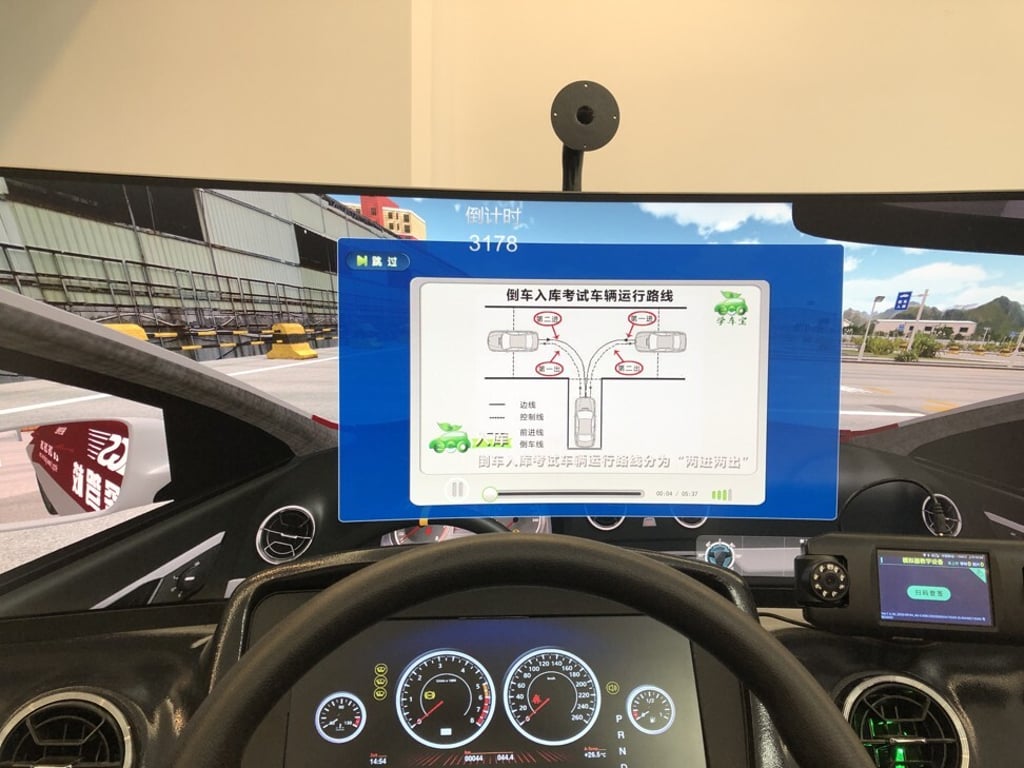Learning how to drive in an AI simulator is becoming more common in China
- AI simulators that replicate the driving experience can save operators rental, labour and equipment costs
- To a certain extent, they may replace traditional driving instructors, although students still need to go on real roads at some point

For some students at Chinese driving schools, learning to drive is pretty similar to playing a video game.
At the Guangshen Driving Training Group, one of the biggest driving training schools in the southern Chinese tech hub of Shenzhen, students check in for practice sessions by scanning a QR code.
Sitting in simulators that resemble old-school racing game arcade cabinets, they navigate realistic 3D simulations of a driving test centre environment – complete with roads, traffic lights, pedestrian crossings and even trees and buildings – on large curved screens.
The self-developed AI project, called Lazy Cat, was launched in June last year. Based on data collected from real test cars, the simulation customises training plans based on users’ performance at each session. Users can also simulate driving along different routes and under various weather conditions.

“We are using technologies to transform traditional training methods, save energy and cut costs in fuel, labour and rent,” said Guangshen general manager Li Zhen.